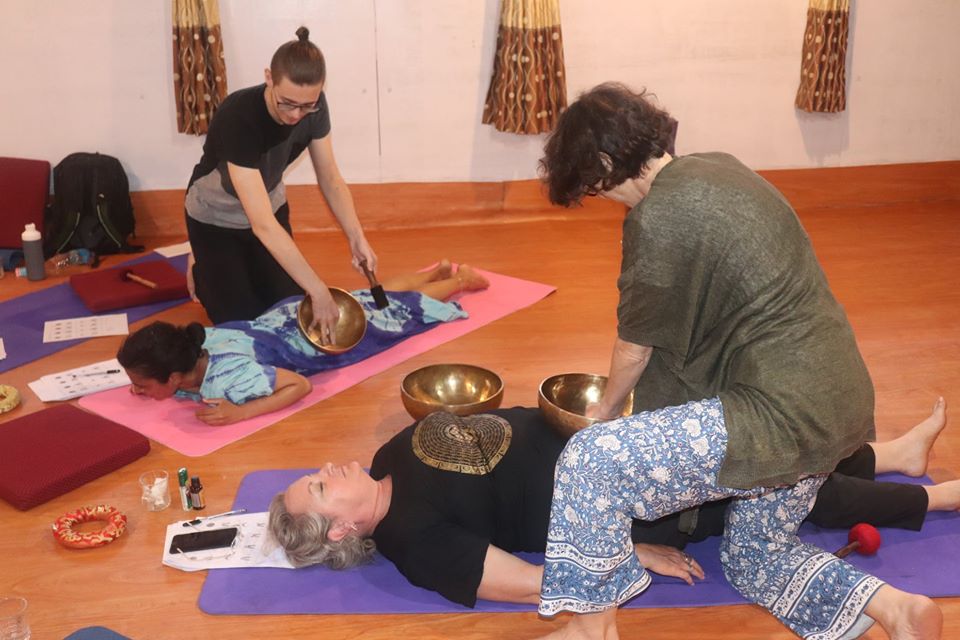
by Singing Bowl In Nepal | Feb 6, 2020 | Singing bowl
Healing Effect of Singing Bowl | Singing Bowl for Healing
Since the healing effect of singing bowl is very good, they are highly used for healing different diseases. In the West, singing bowls are used in alternative medicine as well. The modal vibration studies perhaps derived their modern popularity for that purpose known as Cymatics executed by a physician named Hans Jenny (1904–1972). They are also widely used in sound therapy. ‘Tibetan music’, western recordings, frequently links the bowls with relaxation, as well as associating them with healing powers and the potential to create a positive ‘altered state’ in the mind of the listener. It has been discussed that the altered state (whether meditative, spiritual, drug-related or all three) is a key connection with ‘Tibetan music’ in the US and increases in the market value of that representation of Tibet.
When singing bowls are used for healing, sometimes they are also known as healing bowls. Since they are connected with chakras, they are also called as chakra bowls. The bowls are played around in sound healing, or in “sound massage”. For this, sometimes bowls are placed on the body of the treatment receiver. The healing receiver gets the resonance of the bowls’ harmonized waves in their body which gives good relaxation. The healers, sometimes also work for chakra (energy centers) activation or balance. So there is a great Significance of healing effect of singing bowl.
The Swiss journal survey in Complementary Medicine presents a report for the healing study. Here, fifty-four people with chronic spinal pain took part in one or more of the six séance of singing bowl healing. The pain was significantly reduced for them. The journal report also got that the therapy with singing bowl had a stress-decreasing effect on participants.

One of the health-related American Journal published a study in 2014 which scrutinized the effects of beginning a relaxation period for twelve minutes of the singing bowl sound, which significantly reduced the heart beat and systolic blood pressure in comparison to only silent relaxation.
These are some testimonies about singing Bowls used for healing since centenaries. They make a spectrum of voices to reestablish the balanced vibrational frequencies of morbid. They also harmonize vibratory frequencies on the parts of the body and mind which out-of-harmony.
The sounds created by Tibetan Singing Bowls are a form of energy medicine that has a healing effect many sufferings like stress disorders, depression, pain, and most forms of the disease.
The resonance of the bowl perfectly synchronizes the entrained brainwaves for the initiation of the healing process. Their different unique tones promote a higher level for deep meditation, creative and rhetoric thinking, and intuitive information.
The sanctified phonic waves that are produced from Tibetan Singing Bowls awaken our capacity to hear with more than our ears. We can feel its sound as much as we take it in with our ears. Our entire physical being is touched by sound vibration. After that, a realization comes that not merely ears hear sound but also cells will receive the sound. Sound is very deeply touched physical and metaphysical realm and bring transformation to the emotional and spiritual realm; this is one of the reason sound heals. The sound vibration of singing bowl deters imbalances on physiologic activities and enhances for the healing of virtually any medical disorder.
According to Sound Healing expert, Diáne Mandle, Singing Bowls affect a great deal of physical treatment and also have far-reaching impacts on emotional and spiritual stratum. It is a regenerative process coupled with a spiritual awakening that has great consequences on sickness, disease, and the various dimension of our lives.
Mainstream medical teaching facilities such as the University of North Carolina, Duke University, etc have appended schedules that connect body, mind, and spirit for cancer treatment. Today, cancer prevention centers are using sound like an inseparable part for healing with astounding effects.
Dr. Mitchell Gaynor has been applying sound, along with chanting and Tibetan Singing Bowls with cancer patients for many years. Dr. David Simon, Deepak Chopra’s medical director from California center, revealed that the Singing Bowl sound and chanting are biologically undergone complete set of chemical reactions in the cells into ’endogenous opiates’, that work as internal painkillers and healing constituents. It means the healing effect of singing bowl is great.

How Singing Bowls help in the healing
The disease is unnatural, while health is a natural phenomenon of the body. The disease is the manifestation of inharmony within the body—a disbalance in the cells or organs. Matters are energy vibration at different rates, where alteration on vibrational rate changes on the structure of matter can be done. Himalayan/Tibetan Singing Bowls sound entrains the brain to proceed into the Theta brain wave frequencies that propel blissful and deep meditative states, intuition and lucidity of mind and hence healing effect of Singing bowl works on our mental level. Our nervous system gets impacts through sound vibrations, fascinating our relaxation reflex and fending the stress or pain response.
The ’inner critic’, one’s internal dialogue is tranquil Tibetan Singing Bowls sound. Their sound synchronizes brain waves and uplifts the consciousness of the mind-body unity.
Each part of the body has a different soniferous frequency. We get diseased when an organ or other parts of the body vibrates “out of tune” or non-harmoniously. When each cell and each organ resonate in harmony with the whole being it is known as the healthy state of the body.
Singing Bowl healing is based on the concept that all disease is marked out by an impediment to the energy stream in the body. When energy flow is obstructed, the organ or tissue stops vibrating at a sound frequency, so it appears some kind of weakness or illness. The flow of energy in the required parts of the body will be restored and optimized by the sound frequencies created by Himalayan/Tibetan Singing Bowls.
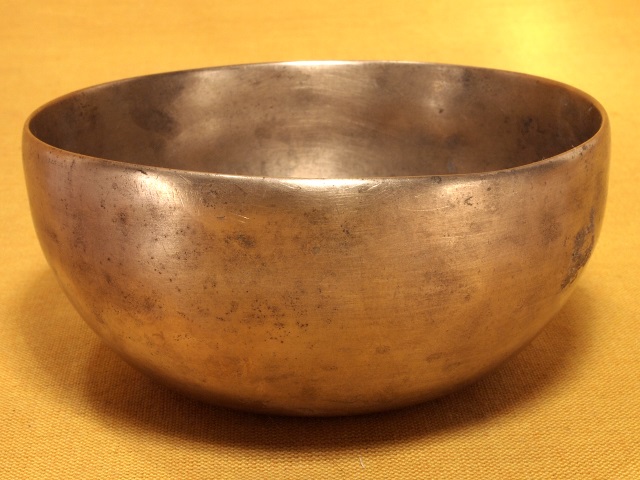
by Singing Bowl In Nepal | Feb 5, 2020 | Singing bowl
What is a singing bowl?
A singing bowl is a type of bell that is faced upright used to produce a sound that invokes a deep state of relaxation which helps to enter into meditation easily, healing of body, Stress management, and other diseases. Since they are quintessential for meditation, they are used in Buddhist altars, temples, monasteries and meditation halls all over the world. The sound of a singing bowl is melodious extra-ordinary, amusing, a sledgehammer, long-lasting euphonic hum that can be both invigorating and tranquility simultaneously. They are mostly found in bowl-shaped. The sizes of bowls range between a few centimeters and a meter across.
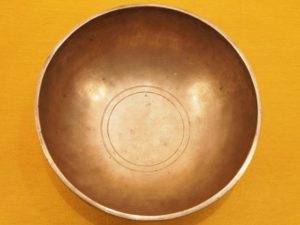
Generally, singing bowls are made from an alloy of copper and tin, in some bowls, it is also found with other elements added. This is also known as bell metal. Sometimes, some impurities or additions are also found in the alloy, although variability can be made from the different alloy colors. Nowadays, in the West, crystal singing bowls made of quartz have become well known. These are treated by some to bring out a more powerful effect than the traditional metal bells.
Singing Bowl in Past
In the past, it is also said that singing bowls were made of an alloy that contains motley metals, generally seven. Those seven metals are silver, gold, mercury, copper, lead (or antimony), tin, and iron; connected with a heavenly body or a chakra. This was considered as a result of an analysis of two bowls in 1996 AD at Concordia University. The analysis detected them to be substantial of bell metal-with little amounts mixed with tinctures -of other metals like iron, lead, zinc, and silver, etc. The measuring instrument did not find gold or mercury within its accuracy.
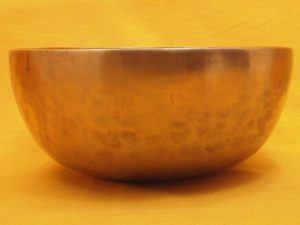
Sometimes, singing bowls are incorporated with meteoritic iron. Re-formed crushed synthetic crystal is sometimes used to make modern ‘crystal’ bowls. The usual manufacturing method of standing bell is casting the melted metal, assisted by hand-hammering to obtain the expected appearance. The same method is followed to form modern bells/bowls, yet sometimes machine-lathing is used for shaping.
The conventional ways of manufacturing the bowls have been lost for more than 50 years, but the bowl with modern manufacturing techniques can produce beautiful tones. Contemporarily, bowls are both hand-hammered and machine-made, or an enarthrosis of both style. The modern bowls come from Nepal and are regarded to be the best.
High-Quality Bowl
The finished product is usually inscribed with a message of well wishes and mantra or for decoration with Aum, Swastik sign, rings, stars leaves or dots. Bowls from Nepal even rarely inscribed in the Devanagari script.
High-quality bronze and addition of different metals, inclusive gold, silver, and expensive meteoric iron (Tibetan name – “sky-metal” or thogcha) were used to manufacture bygone bowls. The presence of different types of ore is supposed to be the cause of the multiphonic overtones of some ancient and antique bowls. These harmonic overtones account for a high value used on antique bowl along with the mellow tones created by age.
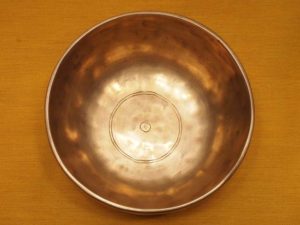
The singing bowl is more vindicate to term as “Himalayan Bowls”, since they are found everywhere in the Himalayan belt of Tibet, Nepal, and India; though they are oft termed as Tibetan Singing Bowls. Their various manifestations are also found in Japan, Korea, Mongolia, and China.
It is a challenge to find the difference between a true antique singing bowl and a modern bowl, as it is comparatively easy to “age” the countenance of a new bowl so that it is very similar to an antique. High-quality modern bowls are efficient to make a beautiful sound, but it is noticeable that age can create the richest, mellowest tones.
In summary, a singing bowl can be defined as an object made up of different metals to produce a sound which soothes the mind and cleanse the environment, also used for many purposes.
For more details- see how to choose high quality bowl
Different names of a singing bowl
Singing bowls are known by a diffuse multiformity of terms in the West, such as bell, basins, cups or gongs. Some particular names comprise prayer bowl, resting bell, Buddha bowl, Tibetan bell, Himalayan bowl, rin gong, cup gong, and bowl gong. And those which are capable of producing a sustained musical note are highly referred to as a Tibetan singing bowl or singing bowl.
Similarly, some other terms including Buddhist bell Buddha bell, campana di temple, cup bell, temple bell, Buddha temple bell, Japanese temple bell, etc are used for contemporary classical music scores. In Japan, the names for standing type bells vary among Buddhist sects. The bell or bowl may be called dobachi , rin, kin, keisu, sahari , kinsu, or uchinarashi, among other things. The term “Daikin” is given, sometimes, for large temple bells, while mini sizes for a home purpose are called ‘namarin’.

by Singing Bowl In Nepal | Jan 11, 2020 | Singing bowl
Use of Singing bowl
Are you interested to know the use of Singing Bowl? The sound vibration of the singing bowl purifies the surrounding throughout the area of its sound. This also pacifies the mind of the listener. So, they are used to create positive vibration for cleansing the environment and soothing the mind. Singing bowls have become popular with yogis since it is very good to create spiritual waves. They may be played during a yoga-asana class, especially during savasana to deepen the practice ( Click here to See how to play singing bowl here).
They are also played during chanting and meditation. The Nepali, Indian, Tibetan people have been practicing sound healing and consciousness transformation with “singing bowls” for centuries. Singing bowls are perfect to support in meditation. They are kept in meditation hall, yoga hall, monasteries and temple all over the world.
Use of Singing bowls are widely spread to accompany meditation and chanting programs. They are also used for religious and spiritual purposes as a part of a tradition. The musical sound produced by singing bowl helps for deeper meditation and relaxation thus accelerates spiritual progress. Use of Singing bowls are now inevitable in sound healing and therapy.
Use of singing bowl as Vibrational activities
Researches have done insightful perusal on the vibrational behavior of bowls and emulated under both condition. The conditions are rubbing-inveigled puja provocation and situation after the strike. The experiment in the quondam case manifests that bowls reveal the sound movement at a tangent and at a radius. The modes of movement are in simultaneous constant and fickle. Like that of the angular velocity of puja, the fickle style rotates around the bowl.
The hitting occurrence is always heard, with an utter symmetric bowl. A harder puja, lower contact force, may create rattling or chattering sound with huger angular motion. People have done researches using loudspeaker-stimulated vibration as well. The behavior of partially water-filled bowls has been detected varying the style of echo reaction with temperature and also varies in the traits of blob-emission from the fluid stratum according to temperature. One of the studies has made a report in 2011 on the BBC which includes slow-motion video.
The vibrations of its sound are like acupuncture needles which are efficient to aid vital energy flow freely. The shiatsu strokes and pressure helps the vibration in the same way to connect the mind of the recipient deeply. This helps to disconnect the worries making a good and helping to experience the present moment
Use of Singing bowls for these benefits
The experiment shows that singing bowl sound has an effect on improve memory, lucidity, vigor, and animateness to take action. Many people have experienced inner tranquility, sound sleep, and better health due to early healing of different types of sufferings. Some other benefits are
· Good relaxation and better sleep
· Chakra Balancing
· Rejuvenation
· Increases mental clarity and understanding
· Enhanced life force energy
· Meditation
· Reduce chronic fatigue syndrome and depression
. Relief pain and discomfort from fibromyalgia
Singing bowls are also used in music
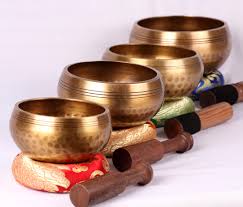
The celuring-set, sparse equipment during 1968 AD was available only in pivotal Javanese reign according to a reference. It is comprised of a big ornate texture. Its top was attached a group of bronze bowls which were half-coconut-shaped to which a short iron bar is used to strike.
From the early 1970s, the West started to import the bowls with singing-aptitude. Henry Wolff and Nancy Hennings were the musicians who are given credit for the singing bowl’s introduction in music in their 1972new-age album Tibetan Bells. This was the first, and there were five related series were released. With music as a cicerone, the concept of the albums is taking to the metaphysical travel.
“Tibetan music” was a peerless way of Wolff and Hennings’ seminal recording of American singing bowl. It became famous in America with many recordings. In the 1980s, since establishment, those terms people started to market it as World music or New-age music. So ‘Tibetan singing bowls’ have taken place as an eminently visual and musical glyph in Tibet. Its range is very long till America, the most widespread ultramodern characterization of Tibet.
Jem Finer has done a musical composition called “Longplayer”. From a brief slice of origin music play cumulatively, six recorded selections at diverse pitches and velocity. It is assembled such that no association is encored until one millennium is
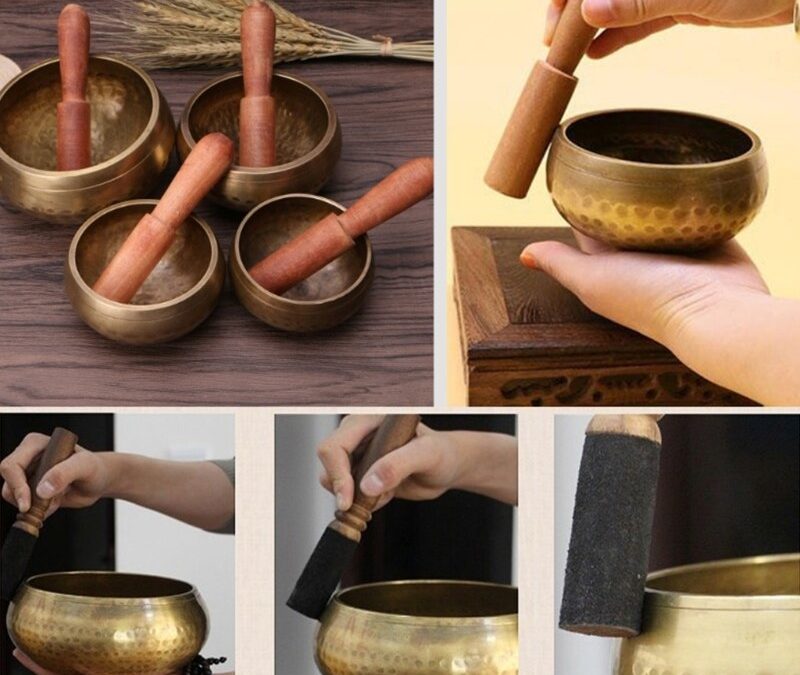
by Singing Bowl In Nepal | Jan 6, 2020 | Singing bowl
How to Play Singing bowl and How to hold It?
How to play singing bowl? This might be your question which will be solved at the end of this article. Singing bowls are played either by rotating (rubbing) a mallet around the outer rim or simply striking the edge to create a resonant, musical note. While rotating the mallet around the outer rim (edge) of a singing bowl, the mallet should not touch the nose (the middle part of a singing bowl). To make sound there should be a firmly press the accompanying mallet in a circular motion against the bowl’s outside edge without holding its nose or edge.
In other words, the mallet should not be rotated around the nose or any portion of the nose. If the mallet is rotated around the nose, the sound produced from the singing bowl will not be harmonious. If the mallet even slightly touches the nose while rotating the mallet around the rim, some discord will arise in the sound of singing bowl. A singing bowl is made to stand on its base without any obstruction on its nose or its rim. Any touch or obstruction on its rim or nose will stop the produced sound.
Once the sound is being emitting out, the touch on the nose or rim will stop the produced sound. Yet, there is a technique rotating (rubbing) from rim to nose in a smooth manner till half circle and continue rotating (rubbing) from nose to rim to complete a full circle maintaining the harmony of tone. This is a method how to play singing bowl in Sound healing.
Keep circling in the same manner for some more rounds to produce the sound. This type of circling is also begun from nose to rim for half circle and continue circling from rim to nose to complete the full circle. The bowl is said to be the perfect played if there is no distortion or unharmony of tone. When you hear a vivid and bright tone you can lower down the motion. You have to use full arm circular motion, not mere wrist rotation.
Another method of playing singing bowl is striking or hammering by a mallet. Female sound (high-pitched) is produced striking a mallet on the rim. For this, the mallet is made forty-five degree slant. Male sound (low pitched) is produced when a mallet is striked at the nose. Generally, the mallet is made ninety-degree to strike at the nose. The ways of producing sound differs according to its application.
The singing bowl can also be played with gentle strike on the just before starting circular rubbing around the edge.
Sometimes, singing bowls may also be partly filled with water, letting them be tuned. This is a Chinese technique, a spouting bowl, has handled which, when rubbed with damp hands, makes water droplets to leap up due to standing waves termed as Chladni patterns on the surface of the water. It is said that such bowls have been manufactured from early 5th century BC. Nowadays singing bowls are more popular without mixing water.
How to Play singing bowls and hold a singing bowl if you play it on hand
Perching a singing bowl on fingertips (rather than on the palm) gives better control with the least amount of contact. This is more important with smaller singing bowls. Bigger bowls can be held on the palm. If you are placing singing bowl on palm, do not hold the nose of bowl with fingers; this will stop the sound.
As and when you singing bowl vibration from very close with touch, you can play it on your palm which allows you to feel vibration for cracks. If singing bowls kept down somewhere the sound tends to outlast your patience for holding them. However singing bowls are often played on a surface. Hope you got your answer on how to play Sining bowl. Pelase don’t forget to read our other article related to singing bowl.









